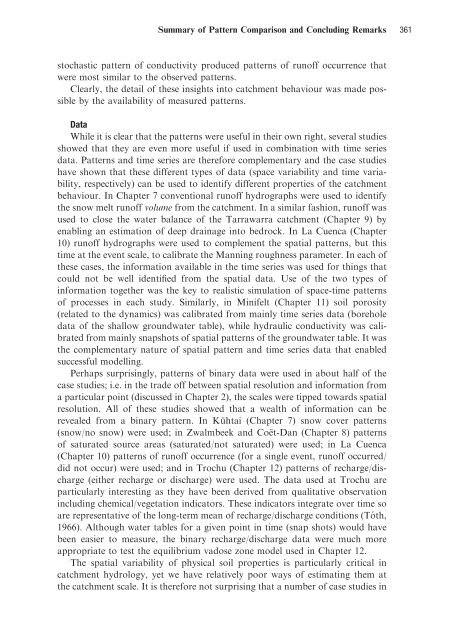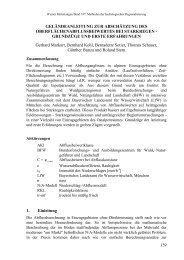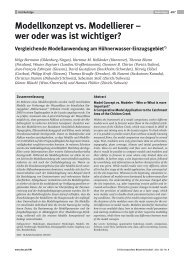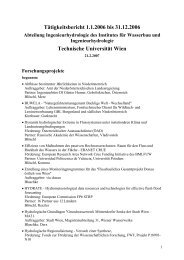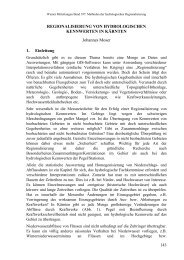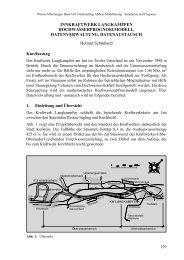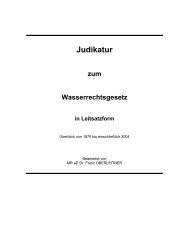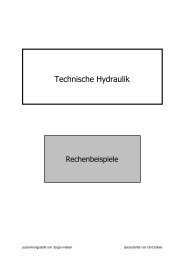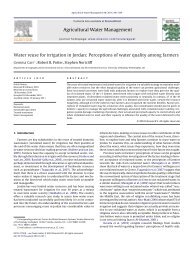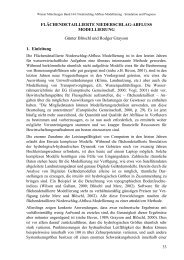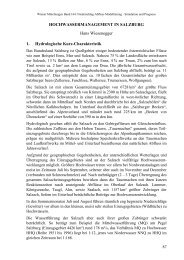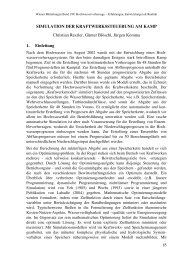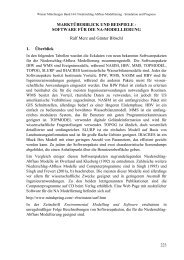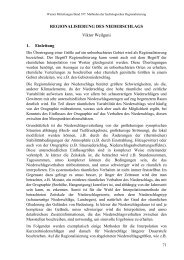Summary of Pattern Comparison and Concluding Remarks
Summary of Pattern Comparison and Concluding Remarks
Summary of Pattern Comparison and Concluding Remarks
Create successful ePaper yourself
Turn your PDF publications into a flip-book with our unique Google optimized e-Paper software.
<strong>Summary</strong> <strong>of</strong> <strong>Pattern</strong> <strong>Comparison</strong> <strong>and</strong> <strong>Concluding</strong> <strong>Remarks</strong> 361<br />
stochastic pattern <strong>of</strong> conductivity produced patterns <strong>of</strong> run<strong>of</strong>f occurrence that<br />
were most similar to the observed patterns.<br />
Clearly, the detail <strong>of</strong> these insights into catchment behaviour was made possible<br />
by the availability <strong>of</strong> measured patterns.<br />
Data<br />
While it is clear that the patterns were useful in their own right, several studies<br />
showed that they are even more useful if used in combination with time series<br />
data. <strong>Pattern</strong>s <strong>and</strong> time series are therefore complementary <strong>and</strong> the case studies<br />
have shown that these different types <strong>of</strong> data (space variability <strong>and</strong> time variability,<br />
respectively) can be used to identify different properties <strong>of</strong> the catchment<br />
behaviour. In Chapter 7 conventional run<strong>of</strong>f hydrographs were used to identify<br />
the snow melt run<strong>of</strong>f volume from the catchment. In a similar fashion, run<strong>of</strong>f was<br />
used to close the water balance <strong>of</strong> the Tarrawarra catchment (Chapter 9) by<br />
enabling an estimation <strong>of</strong> deep drainage into bedrock. In La Cuenca (Chapter<br />
10) run<strong>of</strong>f hydrographs were used to complement the spatial patterns, but this<br />
time at the event scale, to calibrate the Manning roughness parameter. In each <strong>of</strong><br />
these cases, the information available in the time series was used for things that<br />
could not be well identified from the spatial data. Use <strong>of</strong> the two types <strong>of</strong><br />
information together was the key to realistic simulation <strong>of</strong> space-time patterns<br />
<strong>of</strong> processes in each study. Similarly, in Minifelt (Chapter 11) soil porosity<br />
(related to the dynamics) was calibrated from mainly time series data (borehole<br />
data <strong>of</strong> the shallow groundwater table), while hydraulic conductivity was calibrated<br />
from mainly snapshots <strong>of</strong> spatial patterns <strong>of</strong> the groundwater table. It was<br />
the complementary nature <strong>of</strong> spatial pattern <strong>and</strong> time series data that enabled<br />
successful modelling.<br />
Perhaps surprisingly, patterns <strong>of</strong> binary data were used in about half <strong>of</strong> the<br />
case studies; i.e. in the trade <strong>of</strong>f between spatial resolution <strong>and</strong> information from<br />
a particular point (discussed in Chapter 2), the scales were tipped towards spatial<br />
resolution. All <strong>of</strong> these studies showed that a wealth <strong>of</strong> information can be<br />
revealed from a binary pattern. In Ku¨ htai (Chapter 7) snow cover patterns<br />
(snow/no snow) were used; in Zwalmbeek <strong>and</strong> Coe¨ t-Dan (Chapter 8) patterns<br />
<strong>of</strong> saturated source areas (saturated/not saturated) were used; in La Cuenca<br />
(Chapter 10) patterns <strong>of</strong> run<strong>of</strong>f occurrence (for a single event, run<strong>of</strong>f occurred/<br />
did not occur) were used; <strong>and</strong> in Trochu (Chapter 12) patterns <strong>of</strong> recharge/discharge<br />
(either recharge or discharge) were used. The data used at Trochu are<br />
particularly interesting as they have been derived from qualitative observation<br />
including chemical/vegetation indicators. These indicators integrate over time so<br />
are representative <strong>of</strong> the long-term mean <strong>of</strong> recharge/discharge conditions (To´ th,<br />
1966). Although water tables for a given point in time (snap shots) would have<br />
been easier to measure, the binary recharge/discharge data were much more<br />
appropriate to test the equilibrium vadose zone model used in Chapter 12.<br />
The spatial variability <strong>of</strong> physical soil properties is particularly critical in<br />
catchment hydrology, yet we have relatively poor ways <strong>of</strong> estimating them at<br />
the catchment scale. It is therefore not surprising that a number <strong>of</strong> case studies in


